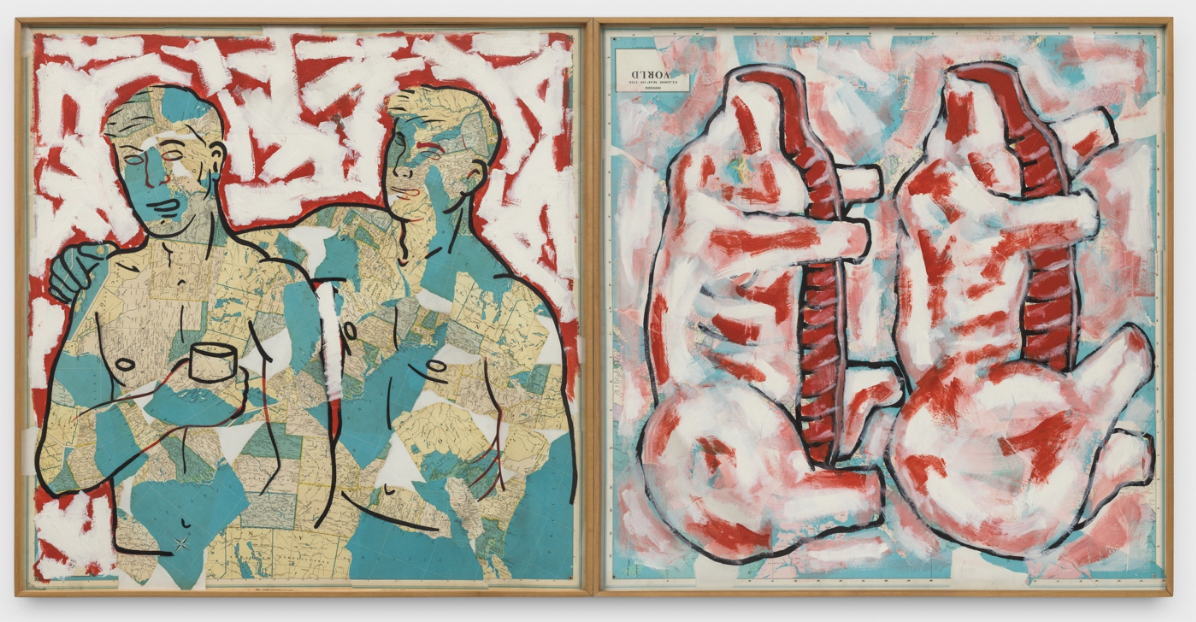
From the moment in 1982 when he stenciled a burning house on the side of a building in Manhattan’s East Village, David Wojnarowicz was a man on fire.
An abused child and former hustler who cruised the dilapidated West Side piers, Wojnarowicz gave voice to the dangerous world he navigated. At a time when homosexual was a dirty word, he flaunted his queerness. His paintings, photographs, installations, performances and writings railed against the status quo. He was at war: at war with a culture that shunned him; at war with a society that turned its back on him when he was diagnosed with HIV; at war with a society that refused to help other gay men who were stricken with the virus.
Within just ten years of his appearance on the art scene, at the age of 37, Wojnarowicz was dead from AIDS.
Since then his raw and subversive pieces have called forth a wide range of emotions. In 2010, Right-wing lawmakers were so deeply offended they banned his video installation from the National Portrait Gallery. On the other end of the spectrum, gallery owners and private collectors were enthralled and quickly moved to secure major acquisitions. As his work gained traction, paintings took their place on museum walls, including MOMA in New York; the Museum of Contemporary Art in Chicago, and the American Center in Paris. In 2018 Wojnarowicz received the ultimate accolade — a comprehensive retrospective at the Whitney Museum.
Now a large diptych that Wojnarowicz painted in 1983 is coming up for sale at the P.P.O.W. Gallery in Soho (https://www.ppowgallery.com)
Called THE BOYS GO OFF TO WAR, the painting reveals the stark truth about war. Bold acrylics overlay a collage of world maps. On the first panel healthy and vigorous young men look to be heading off on an adventure; on the companion panel, the adventure ends tragically, with the boys shorn of their humanity and returned as pig carcasses.
The piece remains as relevant today as it was when it was painted, four decades ago. As war continues to ravage the flesh and blood of so many, THE BOYS GO OFF TO WAR demonstrates its timeless and profound nature.
When a seminal and here-to-fore unknown masterpiece emerges on the marketplace, the event can turn into a unique and singular opportunity for the intelligent collector.

From the moment in 1982 when he stenciled a burning house on the side of a building in Manhattan’s East Village, David Wojnarowicz was a man on fire.
An abused child and former hustler who cruised the dilapidated West Side piers, Wojnarowicz gave voice to the dangerous world he navigated. At a time when homosexual was a dirty word, he flaunted his queerness. His paintings, photographs, installations, performances and writings railed against the status quo. He was at war: at war with a culture that shunned him; at war with a society that turned its back on him when he was diagnosed with HIV; at war with a society that refused to help other gay men who were stricken with the virus.
Within just ten years of his appearance on the art scene, at the age of 37, Wojnarowicz was dead from AIDS.
Since then his raw and subversive pieces have called forth a wide range of emotions. In 2010, Right-wing lawmakers were so deeply offended they banned his video installation from the National Portrait Gallery. On the other end of the spectrum, gallery owners and private collectors were enthralled and quickly moved to secure major acquisitions. As his work gained traction, paintings took their place on museum walls, including MOMA in New York; the Museum of Contemporary Art in Chicago, and the American Center in Paris. In 2018 Wojnarowicz received the ultimate accolade — a comprehensive retrospective at the Whitney Museum.
Now a large diptych that Wojnarowicz painted in 1983 is coming up for sale at the P.P.O.W. Gallery in Soho (https://www.ppowgallery.com)
Called THE BOYS GO OFF TO WAR, the painting reveals the stark truth about war. Bold acrylics overlay a collage of world maps. On the first panel healthy and vigorous young men look to be heading off on an adventure; on the companion panel, the adventure ends tragically, with the boys shorn of their humanity and returned as pig carcasses.
The piece remains as relevant today as it was when it was painted, four decades ago. As war continues to ravage the flesh and blood of so many, THE BOYS GO OFF TO WAR demonstrates its timeless and profound nature.
When a seminal and here-to-fore unknown masterpiece emerges on the marketplace, the event can turn into a unique and singular opportunity for the intelligent collector.